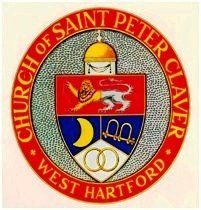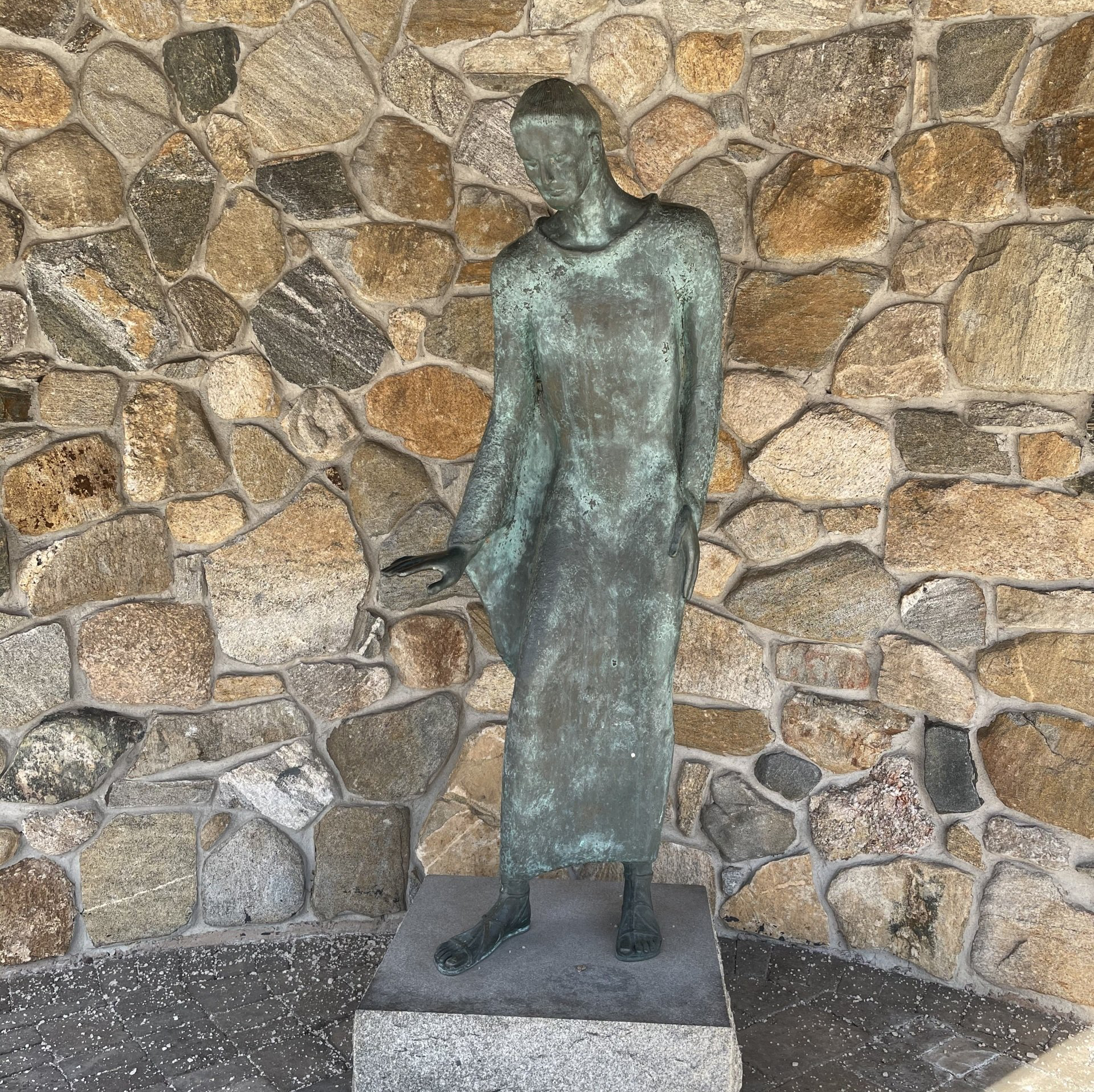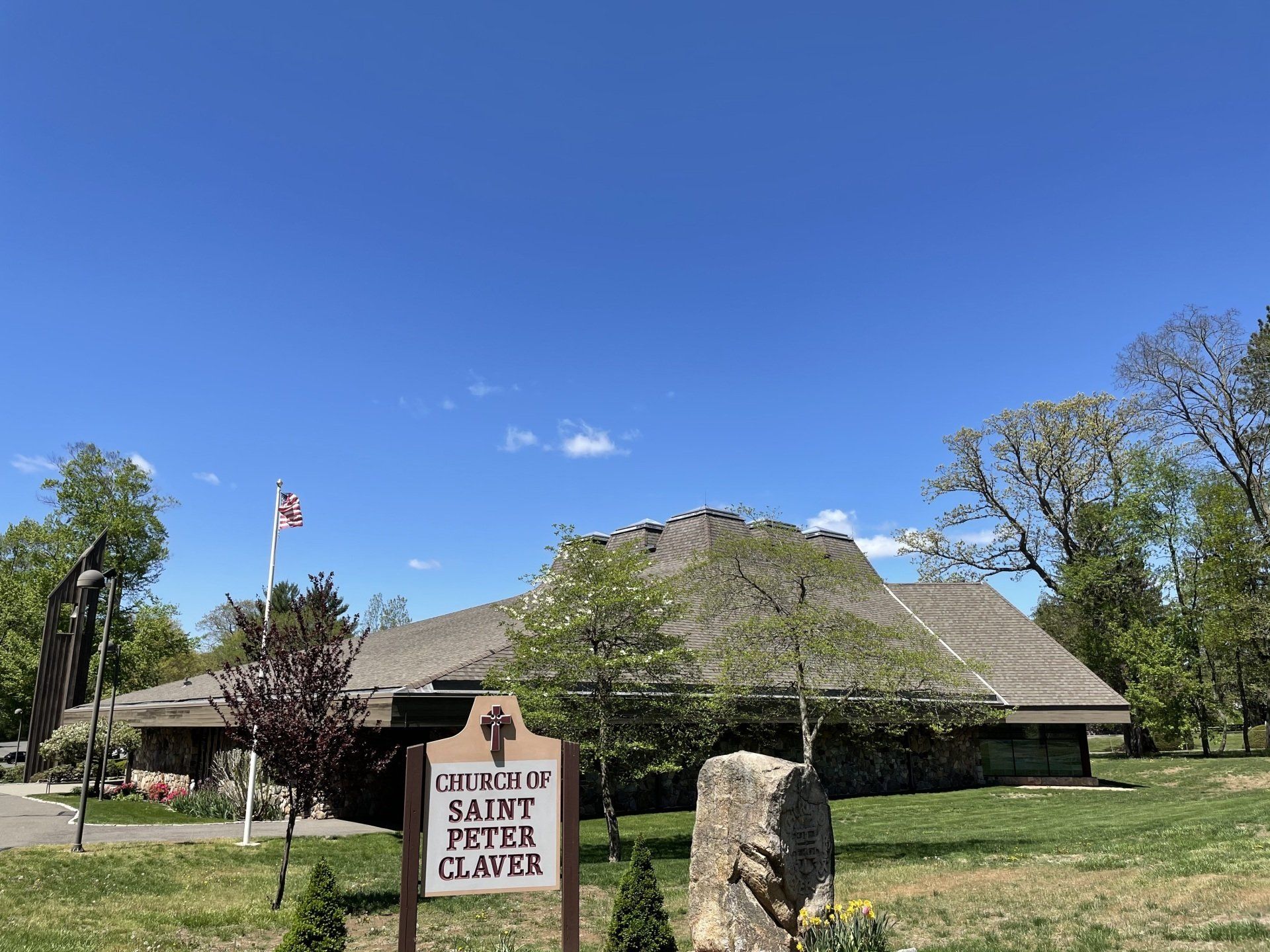St. Peter Claver Mission Statement
“We should speak to them with our hands before we speak to them with our lips”. Saint Peter Claver
By being faithful to the mission given to each one of us in our baptism, we, the people of St. Peter Claver Parish, try to live the Gospel of Jesus Christ by imitating the example of our patron, St. Peter Claver:
- To respond actively and generously to the Commandments of the Gospel within and beyond our parish family.
- To strive to become a united and prayerful parish through a deeper understanding of and an active participation in, the liturgy and in our faith.
- To provide faith-based educational opportunities for parishioners of all ages.
- We will encourage and support parishioners to share their time, talents, and resources to work together in building the kingdom of God – a kingdom of love, justice, and peace.
Our History
On September 9, 1966, with the growth of the Catholic population within the territory of St. Thomas the Apostle Parish in West Hartford, Archbishop Henry J. O’Brien decreed the division of that parish and the canonical creation of St Peter Claver Parish. From the beginning, the Church of St. Peter Claver was born a parish that has echoed the teachings of Vatican Council II. On May 3, 1970 the completed church and parish center were formally dedicated. The contemporary design reflected the many innovations of Vatican II – no pew had a visual obstruction; no altar rail separated the clergy from congregation; and no unseen balcony divided musicians from worshipers. In fulfilling the Council’s messages, there was created a community of people who worked together and prayed together as a parish family in the Church within the Modern World.
In September of 1966, the Reverend John T. Shugrue was appointed as founding pastor. Following Fr Shugrue’s death, in 1988 Reverend Joseph P. McGarry was appointed Pastor. Upon the retirement of Fr. McGarry, in July of 2004, the Reverend James F. Leary was appointed third Pastor of St Peter Claver, and in November of 2015 Reverend Robert M. Kwiatkowski was appointed fourth and current pastor of St Peter Claver Parish.
Our Patron Saint – St. Peter Claver
Peter Claver was born of an impoverished family in Verdu in the northeastern province of Catalonia, Spain in 1580. As a young man he joined the Society of Jesus (Jesuits) and pursued studies in theology and philosophy. Although he excelled at his scholarly work, he was restless; he felt that God was calling him to a different vocation. He felt a strong call to work in the West Indies, then a Spanish colony. In 1610, along with three other Jesuit companions, Peter Claver sailed in the galleon San Pedro for Cartegena, Colombia, a seaport in South America. Cartegena was a terminus for ships that transported people from Africa to the new land where they were sold into slavery. When the ships arrived, they brought holds full of sick, injured, frightened people.
When Peter Claver came to Cartegena, his doubts and restlessness about his life’s work disappeared; he was ordained a priest and dedicated himself to ministering to the enslaved. For over forty years of active ministry, Peter Claver met the boats, bringing food, medicine and comfort. He constantly spoke to the slaves of God’s love for them – and personally baptized over 300,000. Near the end of his life, weakened by illness, Peter had to be tied onto his horse so he could ride to meet the boats and continue his work. Peter Claver died on September 8, 1654. Canonized in 1888 with Pope Leo XIII proclaiming, “No life, except for the life of Christ has so moved me as that of St. Peter Claver”. His feast day is celebrated annually on September 9.
New Paragraph
Our Church
Father John Shugrue’s vision for the church was one that would reflect the life and work of its patron, Saint Peter Claver while at the same time be compatible with the beautiful wooded area surrounding it.
Designed by John Riley of the West Hartford firm of Russell, Gibson and von Dohlen, the church was constructed to resemble the hold of a slave ship, such as those experienced by the men to whom St. Peter Claver ministered. Fieldstone walls, natural wood, black ceiling beams and two stained glass windows combined to reflect a ship while also establishing an atmosphere of simplicity, and peace. Furnishings included Italian marble altar, ambo, baptismal font and presider’s chair, a contemporary bronze crucifix, carved walnut statues of Saint Joseph and the Blessed Mother.
As part of the 40th anniversary of Saint Peter Claver parish, extensive restoration and renovation of the church was undertaken. The project was assisted by John Canning, a restoration artist, whose philosophy is to conserve and construct at the same time respecting the original design concepts. Hence, his plan considered the unusual floor plan, the magnificent stone walls, and the black accents found in the large beams, on the marble pieces and on the Stations of the Cross.
The new design for the church incorporated Italian tile flooring in two colors which complement the fieldstone; solid oak pews reinforced with black panels and kneelers; a refurbished baptismal font with flowing water into an immersion pool; an ambry etched with images of water; and enhanced lighting. In addition to the Blessed Sacrament Chapel, a place for quiet reflection and prayer, and a permanent choir space were constructed. The choir space included room for the new state-of-the-art Dobson pipe organ.
The Blessed Sacrament Chapel located behind the altar was constructed from fieldstones and stained glass windows which symbolize the flowing waters on which the slave ship traveled. The beautiful windows incorporating a quotation from Saint Peter Claver were designed by Scott McDaniel of Stained Glass Resources in Hampden, Massachusetts. They remind us of our patron’s ministry and inspire us to remember our call to service.



